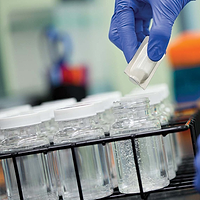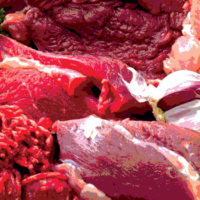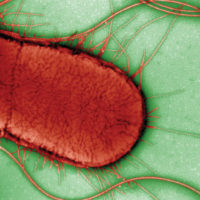Food processors face an ever-evolving set of challenges in their endeavors to ensure the safety and quality of their products. Until recently, efforts to control and eliminate pathogenic bacteria from food have primarily focused on well-known organisms such as Salmonella, Listeria and Escherichia coli O157:H7. However, there is growing interest in the potential public health risk associated with a broader group of E. coli commonly referred to as “the top six non-O157 STEC” or “Top STEC.”
What Are STEC/VTEC/EHEC?
One aspect that often causes confusion is the variety of terms and acronyms used to refer to this group of organisms. Three of the most commonly used terms are Shiga toxigenic E. coli (STEC), Vero toxigenic E. coli (VTEC) and Enterohemorrhagic E. coli (EHEC).
STEC/VTEC refers to those strains of E. coli that produce at least one member of a class of potent cytotoxins called Shiga toxin. Because the terms Shiga toxin and Vero toxin both refer to the same group of toxins, STEC and VTEC can be used interchangeably.
EHEC is a subset of the STEC group that has been implicated in the clinical illness hemorrhagic colitis (HC) or the potentially fatal hemolytic uremic syndrome (HUS).[1]
E. coli are also categorized based on their serotype, defined by the O antigen determined by the polysaccharide portion of cell wall lipopolysaccharide (LPS) and the H antigen due to flagella protein. The most prevalent and widely recognized EHEC serotype is E. coli O157:H7.
Which Organisms Are Significant?
While the literature suggests that there are 100 to 250 different serotypes of STEC, not all serotypes are necessarily pathogenic. Most surveillance studies of clinical isolates report that the following six STEC O serogroups, in addition to O157, represent the greatest public health risk: O26, O111, O102, O121, O145 and O45. [2,3] Karmali et al. present a classification system based on the specific serotype’s prevalence and association with either HC or HUS (Table 1).
 Most experts agree that the pathogenicity of a specific strain of E. coli is determined by the presence of two specific genetic targets, the eae gene, responsible for the formation of an attachment and effacing lesion on the host’s intestinal epithelial cells, and one of the two stx genes (stx1 and stx2), responsible for production of the cytotoxin.
Most experts agree that the pathogenicity of a specific strain of E. coli is determined by the presence of two specific genetic targets, the eae gene, responsible for the formation of an attachment and effacing lesion on the host’s intestinal epithelial cells, and one of the two stx genes (stx1 and stx2), responsible for production of the cytotoxin.
Impact on Industry
At the International Association of Food Protection annual meeting in August, the USDA Food Safety and Inspection Service provided an overview of their current method under development for detection of the top six non-O157 STEC serogroups from beef trim and ground beef. In summary, the method involves an overnight enrichment followed by analysis via multiplex polymerase chain reaction (PCR) for the presence of both eae and the stx genes. Positive enrichments are subsequently screened via a series of reactions for the presence of one of the top six O-serogroups (O26, 0111, 0102, 0121, 0145 and O45). Enrichments found to be positive for eae, stx and one of the top six O-serogroups will proceed to confirmation via immunomagnetic separation (IMS) and selective agar plating. Typical colonies will be struck for isolation and purification and subsequently tested via agglutination procedures to establish their O-serotype. USDA and beef industry representatives agreed that faster, more streamlined methods would be required for industry to implement an effective system for detection of these organisms.
Assurance GDS® for Top STEC
As a leader in pathogen detection, BioControl Systems has developed a new method to satisfy industry’s need for an easy, fast and accurate method for the detection of the top six non-O157 STEC. Using the proven Assurance GDS platform and enrichment media common to both the E. coli O157:H7 and Shiga toxin gene assays, the method consists of a simple and innovative IMS-based sample preparation procedure that helps narrow the field to the six target O-serogroups prior to molecular analysis with the Assurance GDS® Rotor-Gene™. The instrument’s unique rotary design and the probe-based detection system combine to provide results in less than 12 hours including enrichment. With assays for E. coli O157:H7, Shiga toxin genes, Top STEC, Salmonella, Listeria spp., Listeria monocytogenes and Cronobacter (Enterobacter sakazakii), this pathogen detection system is ideally suited to help food processors to meet their food safety objectives. For more information about the Assurance GDS® System, please contact BioControl Systems at www.biocontrolsys.com.
References
1. www.cfsan.fda.gov/~ebam/bam-toc.html.
2. Gyles, C. L. 2007. J Anim Sci 85:E45-E62.
3. Eblen, D. R. 2007. Food Safety and Inspection Service.
4. Karmali, M. A., et al. 2003. J Clin Microbiol 41:4930-4940.




